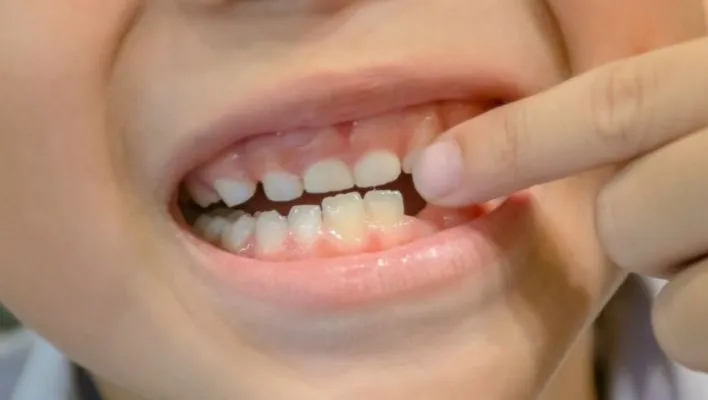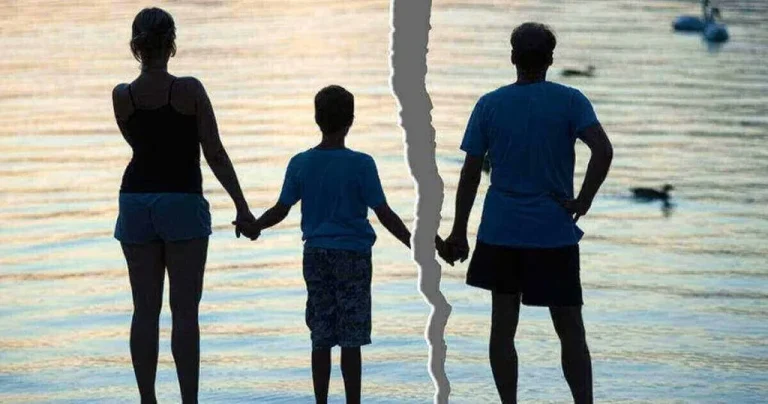Average Age To Lose First Tooth: Children’s Dental Milestones
The average age at which children typically lose their first tooth is generally between 6 and 7 years old. However, there is significant individual variation, with some children losing their first tooth as early as 4 years old and others as late as 8 or 9 years old.
Additionally, the process of losing baby teeth occurs naturally and usually begins with the lower front teeth followed by the corresponding upper front teeth.
Moreover, factors such as genetics, oral health, nutrition, and overall development can influence the timing of average age to lose first tooth.

Understanding Tooth Eruption

Tooth eruption is the process of baby teeth emerging from the gums and becoming visible in the mouth. It is crucial for parents and dental professionals to understand this process in order to track a child’s oral development and identify potential issues.
Generally, at around 6 months of age, the lower central incisors appear before the upper central incisors. Subsequently, the lateral incisors, canines, and molars gradually emerge, resulting in a complete set of 20 primary teeth by the age of 2 to 3 years.
Tooth eruption is influenced by genetic and environmental factors, causing variation in timing among individuals.
Moreover, it is worth noting that teething discomfort, such as drooling, gum swelling, and increased biting, may occur during this stage.
Parents can alleviate these symptoms by massaging the gums, using teething rings, or administering recommended pain relief medication.
Factors Affecting The Age Of Tooth Loss
The average age for tooth loss is around 6 to 7 years old, individual variations can occur. Here are some factors that can affect the age of tooth loss:
- Genetics: Inherited factors from parents can influence the timing of tooth loss.
- Gender: Girls tend to lose primary teeth earlier than boys, but the difference is generally minimal.
- Oral health: Good oral hygiene practices, like regular brushing and dental check-ups, contribute to healthier teeth and can lead to tooth loss around the average age.
- Nutrition: Proper nutrition, with a balanced diet and essential nutrients, plays a role in dental development. Inadequate nutrition may delay tooth eruption and subsequent loss.
- Developmental factors: Individual rates of growth and development affect when primary teeth are shed, including the development of underlying permanent teeth.
- Trauma or dental conditions: Accidents, injuries, tooth decay, or gum disease can cause premature tooth loss, occurring earlier than the average age.
Signs of Tooth Loss

As a tooth approaches the point of falling out, there are several indicators to watch out for. These indications include the tooth becoming loose and wiggly, along with changes in the gums, such as redness, swelling, or inflammation.
Moreover, shifting of neighboring teeth and the appearance of gaps or spaces between teeth can also be observed. Some children may experience mild pain or sensitivity in the area where the tooth is about to be lost. In the case of primary teeth being replaced by permanent teeth, the new tooth may emerge behind or in front of the baby tooth.
Additionally, tooth loss can lead to changes in a child’s bite or chewing pattern.
What Age Do You Lose Teeth Chart
Here’s a table outlining the approximate ages at which children typically lose their primary (baby) teeth:
| Tooth Type | Average Age of Tooth Loss |
| Lower central incisors | Around 6-7 years old |
| Upper central incisors | Around 6-7 years old |
| Lower lateral incisors | Around 7-8 years old |
| Upper lateral incisors | Around 7-8 years old |
| Lower canines | Around 9-10 years old |
| Upper canines | Around 9-10 years old |
| Lower first molars | Around 9-11 years old |
| Upper first molars | Around 9-11 years old |
| Lower second molars | Around 10-12 years old |
| Upper second molars | Around 10-12 years old |
Importance Of Dental Care
Dental care is vital for maintaining oral health and overall well-being. Maintaining a routine of regular brushing, flossing, and scheduling regular dental check-ups is crucial to prevent issues like tooth decay, crooked teeth and gum disease, ultimately supporting the maintenance of a healthy and vibrant smile.
Moreover, dental visits also enable early detection and treatment of problems, safeguarding against more serious complications. Ensuring proper oral hygiene has far-reaching benefits for overall health and wellness, as neglecting oral care can potentially contribute to various systemic health conditions.
Additionally, proper dental care enhances confidence and self-esteem by maintaining a pleasing smile. It is cost-effective in the long run and dental professionals provide education on oral hygiene and raise awareness about its importance.
Tips for Parents
To promote good oral hygiene in children, follow these valuable tips:
Teach and demonstrate proper brushing techniques, including brushing for two minutes, twice a day. Help with daily flossing to remove plaque and prevent cavities. Use age-appropriate toothbrushes and fluoride toothpaste.
Additionally, make brushing enjoyable with colorful toothbrushes or favorite music. Supervise until they can brush and floss effectively. Encourage a healthy diet by limiting sugary snacks and drinks, opting for fruits, vegetables, and dairy. Avoid prolonged exposure to sugary or acidic foods.
Furthermore, provide water to keep their mouths hydrated. To maintain optimal oral health, it is crucial to consistently schedule and attend regular check-ups and cleanings with a dentist every six months.
Common Myths About Tooth Loss
1: Losing baby teeth early is a sign of advanced development.
Reality: The timing of baby tooth loss varies among children and is not necessarily an indicator of advanced development. Children lose their baby teeth at different ages, and it is influenced by various factors such as genetics and oral hygiene.
2: Baby teeth are not important because they will eventually fall out.
Reality: Baby teeth play a crucial role in a child’s overall oral health and development. They help with proper speech, chewing, and maintaining space for permanent teeth. Neglecting baby teeth can lead to dental issues and affect the alignment of permanent teeth.
3: Losing baby teeth too late will cause problems with permanent teeth.
Reality: The timing of losing baby teeth within a reasonable range is not generally a cause for concern. The eruption of permanent teeth is typically guided by the natural process of baby tooth loss, and variations within a normal range are generally not problematic.
4: Pulling a loose tooth before it is ready will prevent complications.
Reality: It is recommended to let a loose tooth fall out naturally. Trying to prematurely pull a loose tooth can cause pain, bleeding, and potential damage to the surrounding gums or tissues. It is best to allow the tooth to loosen and detach on its own.
5: Losing baby teeth is always accompanied by pain and discomfort.
Reality: While some children may experience slight discomfort or sensitivity during the process of losing a tooth, it is not always accompanied by significant pain.
The sensation varies among individuals, and many children go through the process with minimal discomfort.
How Long Does It Take For a Tooth To Grow Back
In general, the process of a permanent tooth growing back after the loss of a primary tooth can take several months to a few years.
The timing can also be influenced by factors such as the age of the individual, overall oral health, and any underlying dental conditions.
Related: How To Get a Teething Baby To Sleep
What To Give Your Child When They Lose First Tooth

The loss of a child’s first tooth marks an exhilarating milestone, and there are numerous ways to commemorate this momentous occasion.
One popular tradition is the Tooth Fairy, where children place their lost tooth under their pillow at night and wake up to find a small gift or monetary reward left by the Tooth Fairy.
Another option is to provide a keepsake box or tooth-shaped container for your child to store their baby teeth as a sentimental keepsake.
You can also give them a personalized certificate or note to commemorate their bravery and achievement.
Additionally, offering a small gift, such as a book, toy, or special treat, can make your child feel rewarded and celebrated.
Losing Teeth Early Sign Intelligence
There is limited evidence linking tooth wear to intelligence, as other social background factors tend to have a greater influence.
However, statistically significant findings regarding asymmetric wear and gender groups suggest that the direction of jaw function may play a role in regulating the processes related to individual cognitive performance during childhood.
The observation of greater left-side tooth wear and early advantages in intelligence test scores among girls is intriguing.
This may be attributed to the fact that girls generally mature earlier than boys in verbal articulation, which is often controlled by the left hemisphere of the brain.
How To Tell If a Tooth Is a Baby Tooth
Baby teeth are smaller and narrower than adult teeth, designed for a child’s smaller jaw and mouth. They become loose and wiggly as the permanent tooth beneath pushes it out.
Moreover, baby teeth generally follow a specific order of eruption and are located in specific areas of the mouth. They also have shorter roots compared to adult teeth.
If a tooth is lost around the typical age range for losing baby teeth (around 6 to 7 years old), it is likely a baby tooth.
Related post: Cavities in baby teeth
FAQs About Average Age To Lose First Tooth
It is not uncommon for some 7-year-olds to still have baby teeth. The timing of tooth loss varies for each child as every individual’s development is unique.
The most common first tooth to lose is typically the lower front tooth, also known as the central incisor. However, the sequence and timing of tooth loss can vary among individuals.
Early tooth loss refers to the premature loss of primary (baby) teeth before their natural time of falling out. This can occur due to dental decay, trauma, or other dental issues.
Yes, it is generally considered normal for a child to start losing their first tooth around the age of 5 or 6, although there can be individual variations in the timing of tooth loss.
Breast milk alone does not typically damage baby teeth. However, prolonged and frequent nighttime breastfeeding can potentially contribute to tooth decay if proper oral hygiene practices are not followed.
Conclusion
In conclusion, the average age for children to lose their first tooth is typically around 6 to 7 years old. However, there can be significant individual variation.
Factors such as genetics, oral health, nutrition, and overall development can influence the timing of tooth loss.
It is crucial to keep in mind that these variations in tooth loss are completely normal and are an integral part of a child’s distinctive developmental journey.

Awais Khan, a distinguished contributor to parentingaspects.com, blends his academic background in early childhood education and psychology with practical experience in teaching and counseling. Renowned for staying current with child development research, he excels in empathetic, clear communication and adept problem-solving. His expertise is further enhanced by certifications in child therapy and parenting coaching. With a deep understanding of diverse family dynamics and a commitment to ethical practices, Awais, as both the owner and administrator of the site, ensures the highest quality of parenting resources and support, supported by his network of professionals in healthcare, education, and child welfare.






